The war in Ukraine has finally turned into a positional one: neither side can conduct a major operation without spending too many resources on it — equipment, ammunition, but most importantly — people. In the discussion of the future strategy of the Armed Forces, instead of "counteroffensive", another term is increasingly heard - "strategic defense".
In an interview with the BBC, the former head of the Armed Forces Viktor Muzhenko stated the need to transition to strategic defense , and, according to him, Kyiv retains the "potential possibility of defeating the occupying forces on the territory of Ukraine" if it can competently develop and implement such a strategy.
The transition to the "year of strategic defense" is also mentioned in a large report prepared by the Ministry of Defense of Estonia.
A positional war, that is, a war in which the front line does not undergo significant changes at any intensity of fighting, is a forced state.
However, you can also get benefits from it when there is simply nothing else left. Although the command of any army usually prefers to conduct a war of maneuver, for which, in fact, all modern armed forces are built.
A positional war can be called a war of attrition by its goals. In contrast to a maneuver or "lightning" war, the goals in it are not the defeat of the enemy's army, occupied cities or territories, access to some strategically important positions, but the reduction of the fighting capacity of the enemy's army and the defense capacity of his state as a whole, the ability of his people and army to resist .
At the same time, a positional conflict cannot by itself end in victory — it either leads to a situation where an exhausted country agrees to concessions, or creates conditions for the transition of the war to a more active, maneuverable one.
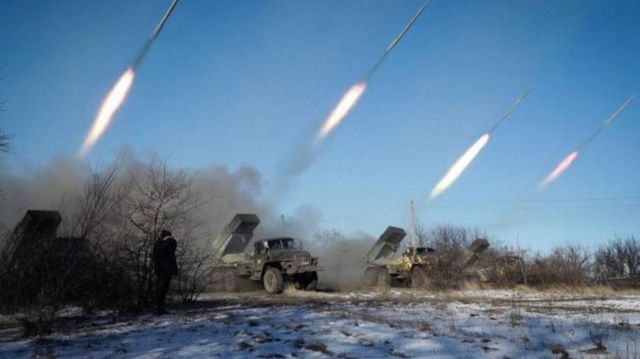
From the fall of 2022 until the end of the summer of 2023, many politicians and soldiers in Ukraine and in the West talked about the necessity and importance of the summer offensive, and obviously, they were going to win at the front with a decisive blow.
However, after the end of this offensive, which did not achieve its goal, it became clear that such a strategy did not work and Kyiv will have to engage in a protracted conflict with Moscow to the point of exhaustion.
At the same time, the Kremlin is convinced that the military, economic and demographic potential of Russia is higher than that of Ukraine. In addition, the Russian leadership is sure that foreign aid to Ukraine will soon probably stop, that the West will tire of this war faster than Russia.
This confidence was heard, in particular, during the "direct line" of Vladimir Putin on December 14, when he declared that the Russian financial and economic system is strong and the army is capable of fighting, unlike Ukraine, which, according to the Russian president, "today has almost nothing produces". "They are trying to preserve something there. Everything is delivered, sorry for the long shot, for free. But this freebie may end someday. And, judging by everything, it is ending little by little," said .
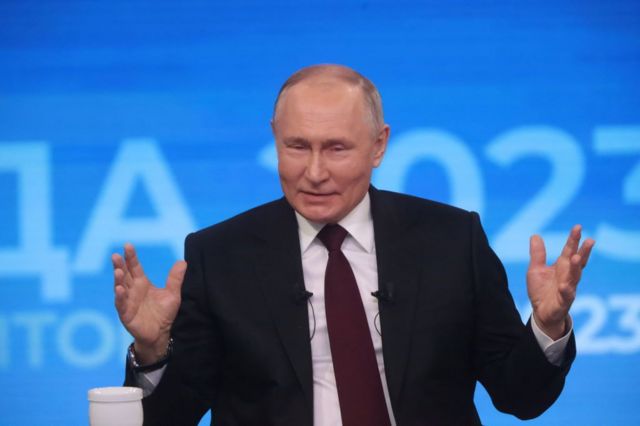
The future of Ukraine's support really remains uncertain — in the US, Congress will decide the fate of this aid in January, and Europe has also not yet been able to approve new funding for Ukraine.
As noted by many experts, in particular from the American Institute for the Study of War, "the sudden cessation of Western aid will most likely sooner or later lead to the loss of Ukraine's ability to deter the Russian army."
Ukraine and its partners are trying to solve this problem by developing a plan that can at least describe the perspective to Western politicians and help them in solving the issue of military aid to Kyiv.
Uncertainty and the lack of a more or less clear perspective greatly hinders congressmen in approving the aid package - they simply do not understand how long they will have to spend money to support the Armed Forces in a war whose victory does not have a clear image.
As the New York Times wrote in early December, Ukraine is developing a strategy together with the United States, the main goal of which is to keep the territories controlled by the Armed Forces of Ukraine.
According to the publication, the Americans propose to focus on this main goal, while the Ukrainians want to conduct more active combat operations with the use of long-range, high-precision weapons.
Now the idea of playing the game imposed on Ukraine by Russia, i.e. starting a war of attrition, instead of preparing a new major offensive, is finding more and more supporters. And this is logical - there is simply no other way out yet.
"A war of attrition is not beneficial to anyone and never, it is undertaken only if there is no possibility to wage war more actively, but in such a situation it is more disadvantageous for Ukraine than for Russia: in addition to losses at the front, millions of refugees, missile strikes throughout the country, destruction infrastructure and economy, unclear prospects of the state in general - therefore, if the offensive and breaking the trend have not succeeded, we need to think again about the prospect", - this is how Israeli military expert David Handelman described the current situation in an interview with the BBC.
It happened
In general, neither the Russian nor the Ukrainian armies were going to dig themselves into the ground and go to a war of attrition.
In February 2022, Russia tried to conduct a classic blitzkrieg with a breakthrough to the capital and the capture of the good half of Ukraine.
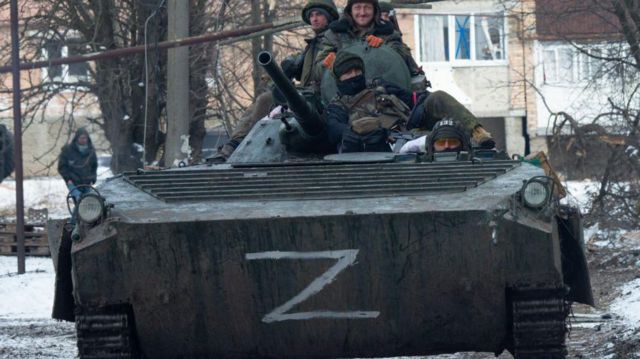
When it was not possible to take Kyiv, and the advance in the south stopped, then Russia began an offensive in Donbas, which was also quite decisive both in character and in terms of goals: Russian troops sought to surround and destroy a large Ukrainian group, but also to no avail - in the south of the "mites" ” the Ukrainian defense could not be penetrated, and in the north everything ended in defeat.
In early September 2022, taking advantage of the low density of Russian troops in the Kharkiv region, the Armed Forces of Ukraine were able to plan and conduct an autumn offensive, liberating a large area, and then forcing Russia to withdraw troops from Kherson to the left bank.
However, subsequently, both sides were unable to plan and conduct any major operation and achieve the same success as the Russian army in southern Ukraine at the beginning of the invasion or the ZSU near Izyum in the fall of 2022.
During the summer offensive of 2023, the Armed Forces wedged themselves into the Russian defense for 30 kilometers, but did not achieve their goal of reaching the Sea of Azov or at least liberating the city of Tokmak, which lies halfway to the coast.
Thus, this war became a positional one in the winter-spring of 2023, and the summer offensive of the Armed Forces of Ukraine only clearly showed how difficult it is to reverse this situation.
Why did the positional impasse occur?
There are several reasons why the war turned into such a state.
After the Russian mobilization, groups of comparable size appeared at the front on both sides, and their numbers allowed to saturate the units in defense enough to make it impossible for small groups to break through.
Such an advance is also complicated by the fact that for a long time, during which the front line remained unchanged, each side had time to prepare for defense by digging trenches, equipping firing points, setting minefields and shooting them.
In addition, each side uses the entire intelligence arsenal to control the territory occupied by the enemy, constantly improving skills and techniques.
Considering how well the near rear is now visible, hidden concentration and breakthrough of small groups is very difficult. Sometimes only a few minutes pass between the detection and destruction of the target by artillery.
Breakthrough by large groups also turned out to be almost impossible. Theoretically, there is an opportunity to assemble a strike group and create a numerical advantage in a certain area of the front, but here, too, intelligence prevents it from being done secretly.
Both sides actively use drones for reconnaissance, and other types of reconnaissance have become more effective. For example, an agent in the enemy's territory can transmit data much faster than before.
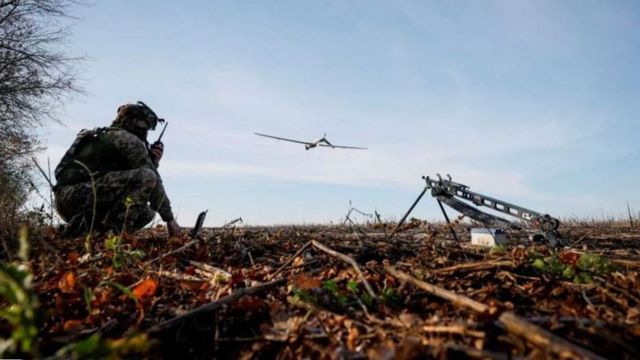
Modern electronic intelligence systems have also become more sophisticated. Ukraine has gained access to information from Western satellites and data from reconnaissance aircraft, while Russia is actively engaging its own intelligence assets, such as radars and anti-missile aircraft.
Therefore, it became almost impossible to secretly deploy a large group - the enemy reveals the plan and has time to react to the threat, pulling reserves to the place of the future breakthrough.
In the end, none of the sides demonstrated the ability to act in large units within the framework of an all-arms battle in the close interaction of various components of the strike group — engineering, tank, motorized infantry, rocket artillery and aviation units.
This is partly due to the fact that so many new military technologies have appeared in this war that their use is still very poorly studied, and the tactical techniques that allow us to fight them have not been worked out.
And since the experience and skill of conducting combat operations are lacking at all levels, starting from the rank and file and ending with the command, all this leads to too high losses.
At the same time, the warring armies acquire new combat experience, which allows them to make fewer and fewer mistakes that the enemy could take advantage of.
What does Ukraine need for defense?
The general goals of the transition to strategic defense, which were discussed in the already mentioned analytical report of the Estonian military, do not give an idea of what tactics the Armed Forces will follow during the campaign.
It will be related to the supply of foreign weapons and military equipment. On the one hand, these deliveries will be based on the needs of Ukraine, on the other hand, they will limit the freedom of action of the Armed Forces.
If the Armed Forces do not succeed in attempting another offensive in 2024, but actually go on the defensive, then the nomenclature of Western supplies must change.
As Israeli military expert David Handelman points out, the Armed Forces of Ukraine first of all need artillery ammunition, because "they are responsible for both defense and offensive in the Russian-Ukrainian war."
"It is necessary to strengthen air defense and anti-missile defense, especially with the start of the next winter campaign of attacks on infrastructure, with this, in particular, the supply of another Patriot battery by Germany is connected. A real start of aviation supply is needed — both as a second wind for the Ukrainian Air Force in the future, and as a countermeasure against Russian aircraft, in particular, the launches of cruise bombs from UMPK, against which anti-aircraft defense is ineffective. Armored vehicles are less critical for defense than for offensive purposes, but they are also needed in the future," the Israeli expert believes.
But the main thing, according to Handelman, is the mobilization of the Ukrainian economy and the state. "First of all, this concerns the transfer of the country to the military rails, the development of the military industry and, in general, the mobilization of material and human resources for the war. So far, Russia is showing itself better in this than Ukraine, although it would seem that Ukraine is more concerned about this and one could expect big changes," he said.
Handelman believes that Ukraine should make maximum efforts to develop its own industrial complex, which will reduce its dependence on Western supplies.
"The problem with supply is that the Western industrial complex is also not expanding fast enough, and there is a physical shortage in many categories [...] Therefore, everything again rests on Ukraine's own capabilities and efforts. If this "not very desirable" transition to military lines continues, Ukraine will lose, and no references to objective circumstances will help," he believes.
Maneuverable or trench?
The document, developed by the Estonian military, contains the goals and objectives that the Armed Forces of Ukraine can set for themselves if they decide to fight Russia to the point of exhaustion.
These include strikes on communications to disrupt the supply of front-line troops, pressure on the Black Sea Fleet to reduce its activity, and airspace protection to prevent Russian aircraft from influencing it.
In addition, the Armed Forces of Ukraine propose to continue deterring the Russian slow offensive, while inflicting the maximum possible losses on the Russian army.
According to the estimates of the Ministry of Defense of Estonia, Russia is able to train no more than 130,000 soldiers for six months. Estonians believe that if irreversible losses (killed and wounded without the possibility of returning to the front) amount to 50,000 in half a year, this will overload the Russian mobilization system and lead to the fact that less trained soldiers will enter the front, which will reduce the fighting capacity of the Russian group.
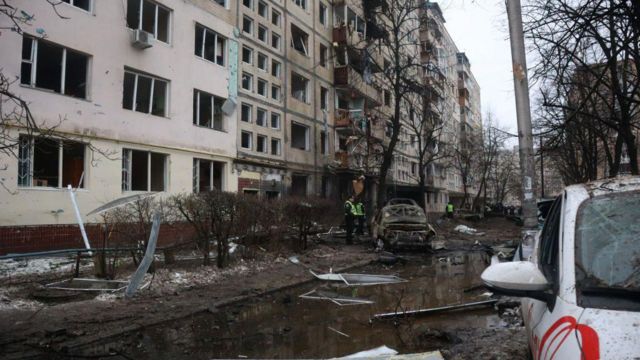
These general principles outlined in the report do not give an idea of what tactics the Armed Forces will choose. Probably, even the command of the Ukrainian army does not know this yet.
A defensive strategy does not mean that troops will not maneuver and conduct offensives.
The storming of Vugledar last winter, the capture of Bakhmut in the spring, the battles near Avdiyivka — all these operations carried out by the Russian army fit into the concept of positional warfare, as well as the Ukrainian bridgehead on the left bank of the Dnieper and even the advance under the same Bakhmut and in the area of the Orichiv ledge in the summer of 2023.
These operations did not lead to significant changes in the front line, that is, changes that would change the nature of the war (that is why the war is called a positional war). And all of them were extremely expensive.
At the same time, since field fortification is one of the bases of defense in a positional war, the construction of defense lines is an additional cost of such a conflict. These are tens and even hundreds of kilometers of trenches, anti-tank ditches, fences, hectares of minefields, concrete bunkers, pillboxes and much more. Both sides are now engaged in the construction of these defense lines.
It is difficult to give up active combat operations during a positional war, because this is the only way to retain or win the initiative, forcing the enemy to respond to threats. A reaction is always more expensive than a pre-prepared strike, because it requires emergency measures.
Therefore, during a positional war, each army has a choice — either to prepare and conduct costly active operations, or to respond to the enemy's initiative, spending even more resources on it.
In an interview with the BBC, Viktor Muzhenko emphasizes that the strategic defense, to which, according to him, the Ukrainian forces must now move, involves counterattacks.
At the same time, says Muzhenko, Ukraine must "reformat the front". "This means that we need to create a powerful reserve - not only quantitative, but also qualitative. And a qualitative reserve is the presence of military organizations: a brigade, a corps, and so on - prepared, equipped, coordinated, with high morale, capable of solving such issues," he summarizes.
David Handelman believes that defense will require less effort and tension than a more active war, but this time should be used to prepare for decisive military actions.
"Defense is less costly in terms of resources than attack, but still rests precisely on the perspective: both losses and other costs are simply spread over time instead of large one-time losses during a large offensive. Therefore, if during the defense phase there are no changes in the transition to military rails, then this is simply a postponement of troubles, and not their solution," he says.
This is also stated in the report of the Estonian military. According to the experts of the Ministry of Defense of Estonia, the main goal at this time is to undermine Russia's confidence that it will be possible to end the war within 2024. For the defense of Ukraine, the next year will be strategic, during this time the country's military and industrial base must be built so that Kyiv has the opportunity to defeat the Russian military.
Considering everything, the command of the Armed Forces is fully aware of the problems that will arise during a long-term positional confrontation. Ukrainian Commander-in-Chief Valery Zaluzhnyi published an article in the Economist magazine at the beginning of November, in which he expressed his views on what Ukraine needs in such a war.
According to Zaluzhnyi, the priorities for the Armed Forces (that is, those areas that need to be developed and strengthened) are aviation, which will allow to achieve, if not superiority in the air, then at least parity; EW - they are vital against the background of a sharp increase in drones; systems of counter-battery combat - artillery in a positional war becomes one of the main means of defeat and must be dealt with; engineering equipment to overcome minefields — they became one of the main factors that prevented the Armed Forces from conducting a successful offensive. And, finally, people, since they are the ones who liberate the occupied territories — planes, drones and other equipment cannot do this.
Zaluzhnyi wrote that Ukraine can restore its territorial integrity only by military force. However, he himself admits that the war has acquired a positional character, and many commentators say that the main thing for Ukraine in the period of "strategic defense" is not to lose even more of its land.

